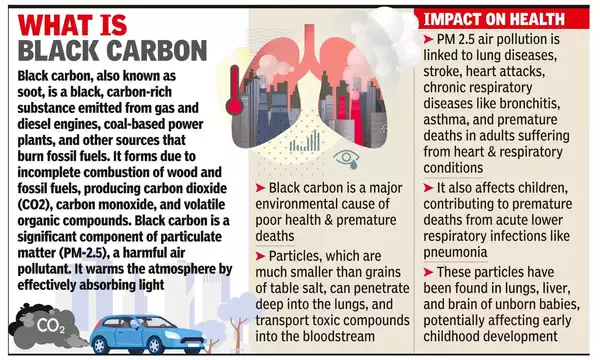Uttar Pradesh Switch to Hindi
Uttar Pradesh to Become Self-Sufficient in Pulse Production
Why in News?
Uttar Pradesh aims to be self-sufficient in pulse production in 3-4 years, with a 36% increase since 2016. The Government focuses on Arhar, Urad, and Moong cultivation.
Key Points
- During 2016-217 to 2023-2024, the production of pulses increased from 2.394 million metric tons to 3.255 million metric tons.
- To increase pulse production 27,200 hectares of crop demonstrations will be organised under the National Food Security Mission scheme.
- The target is set for the distribution of 31,553 quintals of seeds and the production of 27,356 quintals of certified seeds.
- To ensure fair prices for the produce of pulse crops in the market, the government is also ensuring the procurement of all these crops at Minimum Support Price (MSP).
- According to the sources, model pulse villages will be developed in the leading pulse production districts of Bundelkhand - Banda, Mahoba, Jalaun, Chitrakoot, and Lalitpur.
National Food Security Mission (NFSM)
- NFSM is a Centrally Sponsored Scheme launched in 2007 based on the recommendations of the agriculture sub- committee of National Development Council (NDC).
- The committee pointed out the need for improved agricultural extension services, technology transfer and decentralized planning as a result of which NFSM was conceptualized as a mission mode program.
Minimum Support Price (MSP)
- MSP is the guaranteed amount paid to farmers when the government buys their produce.
- MSP is based on the recommendations of the Commission for Agricultural Costs and Prices (CACP), which considers various factors such as cost of production, demand and supply, market price trends, inter-crop price parity, etc.
- CACP is an attached office of the Ministry of Agriculture and Farmers Welfare. It came into existence in January 1965.
- The Cabinet Committee on Economic Affairs (CCEA) chaired by the Prime Minister of India takes the final decision (approve) on the level of MSPs.
- The MSP is aimed at ensuring remunerative prices to growers for their produce and encouraging Crop Diversification.


Uttar Pradesh Switch to Hindi
Devotees Take Out Lord Jagannath Rath Yatra
Why in News?
Recently, The grand Rath Yatra of Lord Jagannath Swami Ji was organized in Allahabad under the auspices of the Shri Jagannath Swami Rath Yatra Committee Kydganj.
Key Points
- The Rath Yatra commenced from the Shri Jagannath Temple situated on Triveni Marg in Kydganj.
- In addition to the NandiGhosh Rath of Lord Jagannath, the chariots of Garuda Dev, Badri Vishal, Lord Ram, and Lord Dwarkadhish were also part of the procession.
- Tableaus depicting Radha Krishna, Narsingh Avatar, and Damodar Leela were also included in the Rath Yatra.
- Jagannath Rath Yatra is an annual Hindu festival that celebrates the journey of Lord Jagannath, his elder brother Lord Balabhadra, and his younger sister Goddess Subhadra from their home temple in Puri, Odisha to their aunt’s temple in Gundicha, about three kilometres away.
- The legend behind the festival is that once, Goddess Subhadra expressed her desire to visit her aunt’s place in Gundicha.
- To fulfill her wish, Lord Jagannath and Lord Balabhadra decided to accompany her on a chariot ride. This event is commemorated every year by taking the deities on a similar journey.
- The festival dates back to at least the 12th century CE, when the Jagannath temple was built by King Anantavarman Chodaganga Deva. However, some sources suggest that the festival was already in practice since ancient times.
- The festival is also known as Festival of Chariots, as the deities are carried on three massive wooden chariots that are pulled by devotees with ropes.
- It begins on the second day of the bright fortnight of the month of Ashadha (June-July) and lasts for nine days.
Jagannath Puri Temple
- It is one of the most impressive monuments of the Indian State Odisha.
- This temple is known as the “White Pagoda” and is a part of Char Dham pilgrimages (Badrinath, Dwaraka, Puri, Rameswaram).
- It is a splendid example of Kalinga architecture, which is characterised by curvilinear towers, intricate carvings and ornate sculptures.
- The temple complex is surrounded by a high wall with four gates facing the four cardinal directions.
- The main temple consists of four structures: the vimana (sanctum), the jagamohana (assembly hall), the nata-mandira (festival hall) and the bhoga-mandapa (offering hall).
- Jagannath Puri temple is called ‘Yamanika Tirtha’ where, according to the Hindu beliefs, the power of ‘Yama’, the god of death has been nullified in Puri due to the presence of Lord Jagannath.


Uttar Pradesh Switch to Hindi
Decline in Black Carbon Level in Varanasi
Why in News?
According to a study at Banaras Hindu University (BHU), an annual average decline of 0.47 micrograms per cubic metre in carbon level has been observed in Varanasi and the central Indo-Gangetic plains.
Key Points
- The study utilized black carbon data generated under the Aerosol Radiative Forcing over India (ARFI) program of the Indian Space Research Organisation (ISRO).
- An analysis of a decade-long measurement of black carbon mass concentration was conducted at a representative location in the central Indo-Gangetic plain, Varanasi, from 2009 to 2021.
- The purpose of this analysis was to understand the physical, optical, and radiative impact of black carbon in this region.
- The study recorded an average annual decrease of 0.47 micrograms per cubic metre in black carbon levels.
- Black carbon levels also showed a consistent seasonal decline, with a post-monsoon average decrease of 1.86 micrograms per cubic metre and a pre-monsoon average decrease of 0.31 micrograms per cubic metre.
- The study found that the black carbon in Varanasi and central Indo-Gangetic plains mostly originates from distant sources, rather than local factors.
- These particles are transported over long distances from the lower and upper Indo-Gangetic plains, Pakistan, the Middle East, and southern peninsular regions.
Black Carbon
- Black Carbon (BC) is a short-lived pollutant that is the second-largest contributor to warming the planet behind carbon dioxide (CO2).
- Unlike other greenhouse gas emissions, BC is quickly washed out and can be eliminated from the atmosphere if emissions stop.
- Unlike historical carbon emissions it is also a localised source with greater local impact.
- Black carbon is a kind of an aerosol.












%20MPPCS%202025%20Desktop%20E.jpg)
%20MPPCS%202025%20Mobile%20E%20(1).jpg)



.jpg)






.png)
.png)



 PCS Parikshan
PCS Parikshan



